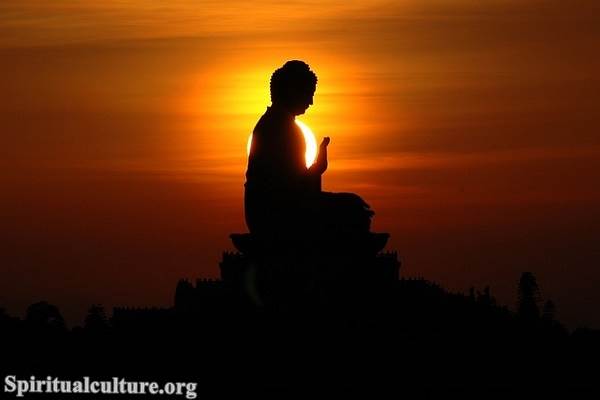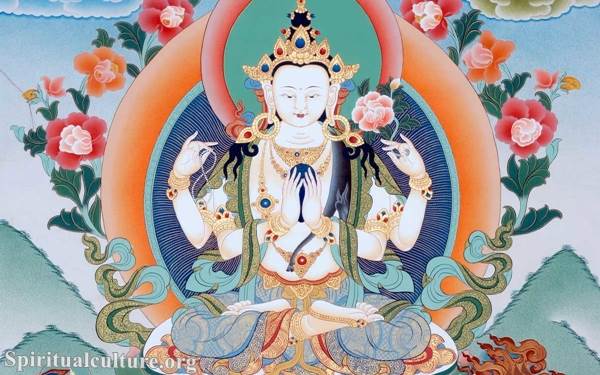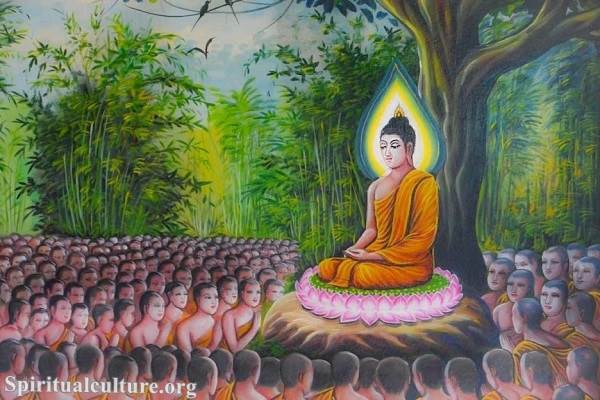Across centuries and continents, Buddhist pilgrims have walked the earth not just to arrive at holy destinations — but to awaken something within. Pilgrimage, in the Buddhist tradition, is more than a journey across land; it is a movement of the heart toward deeper truth, mindfulness, and liberation.
As Spiritual Culture, we invite you to explore the sacred geography of Buddhism — from the exact place where the Buddha attained enlightenment, to quiet temples nestled in mountains where his teachings still echo. This article unveils the world’s most meaningful Buddhist pilgrimage sites, explaining why they matter, what they symbolize, and how each can transform the pilgrim.
Let us begin with the most sacred of all — the Four Holy Sites of Buddhism — and expand outward to hidden gems and modern paths of devotion.
The Four Most Sacred Buddhist Pilgrimage Sites
Bodh Gaya, India – The Site of Enlightenment
It was beneath the branches of the Bodhi Tree in Bodh Gaya that Prince Siddhartha became the Buddha — the “Awakened One.” This is the heart of all Buddhist pilgrimage.
The Mahabodhi Temple
Now a UNESCO World Heritage Site, the Mahabodhi Temple stands beside a descendant of the original Bodhi Tree. Monks from many traditions chant here daily, a symbol of global Buddhist unity.
“There is no place on earth more sacred to Buddhists than this.” – His Holiness the Dalai Lama
Pilgrimage Practice at Bodh Gaya
Pilgrims often circumambulate the temple clockwise, chant sutras, or sit in silent meditation — honoring not only the Buddha’s awakening but their own potential for awakening.
Sarnath, India – The First Teaching
After enlightenment, the Buddha traveled to Sarnath and gave his first sermon — the Dhammacakkappavattana Sutta, or “Setting the Wheel of Dharma in Motion.”
The Dhamek Stupa
This towering structure marks the place where the Buddha taught the Four Noble Truths and Eightfold Path. It is surrounded by ruins of ancient monasteries and a museum filled with relics.
Symbolism of Sarnath
To visit Sarnath is to reconnect with the essence of Buddhism: the truth of suffering and the path to liberation.
Lumbini, Nepal – The Birthplace of the Buddha
In the gardens of Lumbini, Queen Māyādevī gave birth to the child who would become the Buddha. It is the sacred beginning.
The Sacred Garden and Maya Devi Temple
The temple is built over the exact spot believed to be the birthplace. A pillar erected by Emperor Ashoka in the 3rd century BCE still stands.
“This is where the wheel of compassion began turning.”
Pilgrims walk mindfully through the tranquil park, visiting monasteries built by Buddhist nations — a testament to the international reverence for this sacred land.
Kushinagar, India – The Passing into Parinirvana
Kushinagar is where the Buddha passed away and entered Parinirvana — the final liberation from the cycle of birth and death.
The Mahaparinirvana Temple
Here lies a reclining statue of the Buddha, symbolizing his peaceful transition. To come here is to reflect not on loss, but on transcendence.
“All conditioned things are impermanent — strive diligently.”
— The Buddha’s last words (Mahāparinibbāna Sutta)
Other Major Buddhist Pilgrimage Sites
Sri Pada (Adam’s Peak), Sri Lanka
This mountain peak bears a sacred footprint — believed by Buddhists to be that of the Buddha, left during a visit to Sri Lanka.
The Pilgrim’s Ascent
Devotees climb thousands of steps in the dark to reach the summit by sunrise, chanting and supporting one another. It is both a physical and spiritual climb.
Shwedagon Pagoda, Myanmar
Rising high above Yangon, this golden stupa is said to enshrine strands of the Buddha’s hair — and is one of the most radiant pilgrimage sites in the world.
A Living Pilgrimage Site
Pilgrims circle the stupa barefoot, offer lotus flowers, and light candles. The shimmering gold reflects not just the sun, but the faith of a nation.
Mount Emei and Leshan Giant Buddha, China
Mount Emei is one of the Four Sacred Buddhist Mountains of China and a center of Mahayana Buddhism.
Spiritual Landscape
Temples dot the misty mountain, and monks still reside in retreats. Nearby stands the Leshan Giant Buddha, carved from a cliff — a powerful symbol of devotion.
Borobudur, Indonesia
A massive stone mandala built in the 9th century, Borobudur is a pilgrimage through metaphor — a walk through samsara to nirvana.
Pilgrimage in Circles
Pilgrims walk clockwise around its ascending terraces, progressing from the world of desire to the realm of formless wisdom — just as the path to enlightenment unfolds.
Kyaiktiyo (Golden Rock), Myanmar
This gold-leaf-covered rock, miraculously balancing on a cliff’s edge, is believed to be held in place by a strand of the Buddha’s hair.
Faith Defying Gravity
To stand before the Golden Rock is to witness how faith can suspend even the laws of nature. It is a place of prayer and awe.
The Eight Great Places (Attha-mahāthanāni)
Beyond the four primary sites, Buddhist texts also honor four additional sacred places connected to miracles of the Buddha:
- Rajgir – Where the Buddha tamed a wild elephant.
- Vaishali – Where he announced his approaching death.
- Sravasti – Where he performed the Twin Miracle.
- Sankassa – Where he descended from the heavenly realm.
These sites complete the Eight Great Places of Pilgrimage, especially for Theravāda Buddhists.
Modern Pilgrimage Routes
Japan’s 88-Temple Shikoku Pilgrimage
Spanning over 1,000 kilometers, this circuit honors Kūkai (Kōbō-Daishi), the founder of Shingon Buddhism. Pilgrims wear white robes and conical hats as they visit 88 temples, often by foot.
“The journey is the destination” — this is true more here than almost anywhere.
Nepal’s Peace Pagodas
Scattered across the world — in Japan, Nepal, Sri Lanka, and even the West — Peace Pagodas offer places of reflection, built by the Nipponzan Myohoji order to inspire harmony and nonviolence.
Why Do Buddhists Go on Pilgrimage?
A Journey of Faith and Transformation
Buddhism does not require pilgrimage — it is not a commandment. Yet, to walk where the Buddha walked is to feel the Dharma breathe through the earth.
Inner and Outer Travel
Each step on the pilgrim’s path mirrors a step on the inner path: toward mindfulness, toward compassion, toward awakening.
Pilgrimage teaches:
- Letting go: of possessions, of plans, of ego.
- Simplicity: carrying only what is needed.
- Interconnectedness: as pilgrims from diverse cultures bow together in reverence.
Pilgrimage as a Meditative Practice
Unlike sightseeing, Buddhist pilgrimage invites silence, chanting, and mindfulness. The goal is not only to arrive but to transform along the way.
Mindful Walking
The Buddha often taught through walking. Pilgrimage allows the feet to move in rhythm with the breath, returning the mind to the present.
Pilgrimage Across Buddhist Traditions
Theravāda Focus
Theravāda Buddhists, particularly in Sri Lanka, Thailand, and Myanmar, often emphasize visiting the Eight Great Places and sites related to early Buddhist history.
Mahāyāna Approach
Mahayana Buddhists — in China, Japan, and Korea — focus on sacred mountains, temples connected to bodhisattvas (like Avalokiteśvara), and spiritual masters like Nāgārjuna or Kūkai.
Vajrayāna Pilgrimage
In Tibetan Buddhism, sites like Mount Kailash, Samye Monastery, and Tso Pema (Rewalsar Lake) are central, often associated with Padmasambhava (Guru Rinpoche) and esoteric teachings.
Pilgrimage Beyond Geography
Even without travel, Buddhist texts encourage us to make internal pilgrimages — journeys of reflection, discipline, and awakening.
“The mind is the pilgrim. The path is mindfulness. The destination is freedom.”
— Spiritual Culture
Reflect and Reimagine
Buddhist pilgrimage is not only about where you go — but who you become along the way.
Whether you walk the dust of Bodh Gaya or sit in silence before a statue at home, the spirit of pilgrimage is alive. It is a sacred yearning to be near the truth. It invites you to remember: you, too, can awaken.
Let the path inspire you. Let the silence teach you. Let the journey change you.
Where will your pilgrimage begin?
If this article resonates, explore more teachings and journeys with us at SpiritualCulture.org — where every step, every question, and every seeker finds a place.



